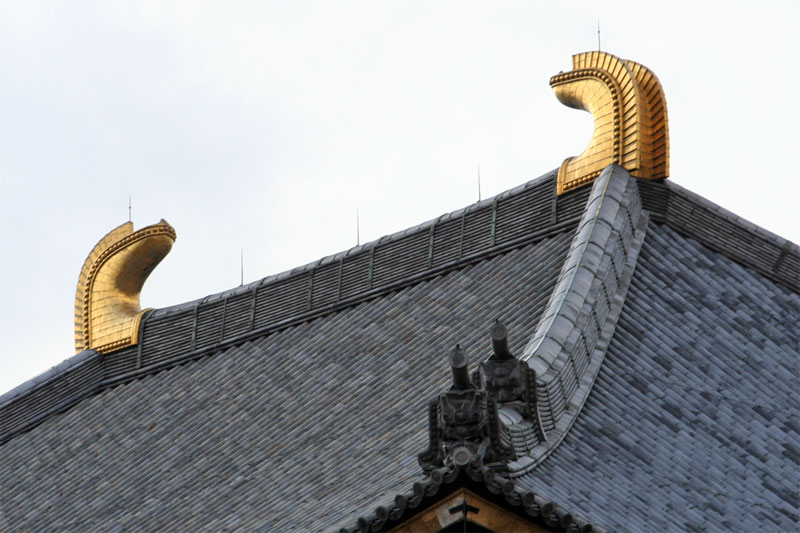| Also
written ιυφ, εoφ, ; also called tobi-no-o ιτΜφ, kutsugata B`,
(lit. shoes tile) because it is thought to resemble proto-modern shoes.
A type of roof ornament used on the main ridge *oomune
ε, of temple and palace architecture. It resembles the tail of an animal,
but its origin is not known. It is believed to protect a building against
fire. It was widely used in China, and was popular in Japan in the Asuka
and Hakuhou periods (552-710). Shibi are traditionally made of tile
and the oldest surviving example in Japan is found on the west side of the
Kondou ΰ° at Toushoudaiji ΅η, in Nara. It dates from the 8c. There is
an unusual use of shibi at Nankoubou μυV Betsuguu Κ{, in Ehime prefecture,
where they were placed on corner ridges *sumikudarimune
χ~, and on the off-spring ridges, *chigomune
t, of the main hall *hondou
{°. The popularity of shibi waned by the end of the Kamakura period
(1185-1333). Later shibi were made of a wooden frame covered with
a sheet of copper. A few stone shibi also exist. One variations includes
the fish-shaped *shachi
ιΝ. |



